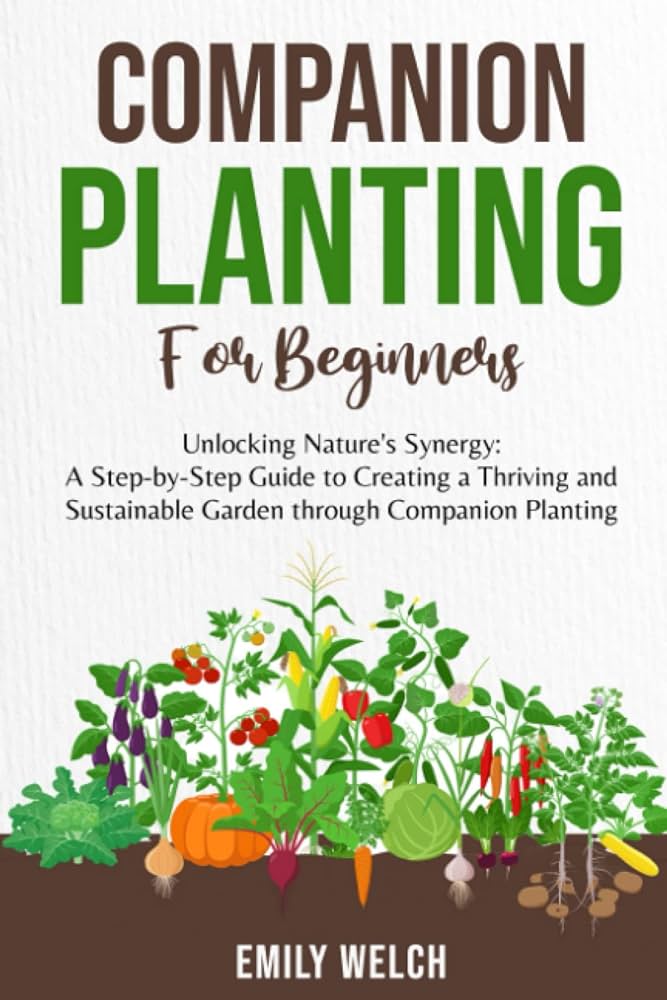As the sun rises, casting a warm glow over my garden, I can’t help but feel a sense of joy and fulfillment. There’s something magical about growing your own food, about witnessing the cycle of life unfold right before your eyes. But maintaining a healthy garden is no easy task. It requires patience, dedication, and most importantly, knowledge. One practice that has revolutionized my gardening experience is companion planting.
Companion planting is the art of pairing specific plants together to help them thrive. It’s like giving your garden a support system, where each plant has a friend who can provide protection, nutrients, or even ward off pests. It’s a harmonious dance of nature, where plants work together to create a thriving ecosystem.
One of my favorite combinations in the garden is tomatoes and basil. Not only do they make a delicious duo in the kitchen, but they also benefit each other in the garden. Basil repels pests like aphids and mosquitoes, while tomatoes act as a natural shade for basil, protecting it from the harsh afternoon sun. Together, they create a beautiful symbiotic relationship that enhances the taste of both plants.
Another powerful partnership is the trio of corn, beans, and squash, famously known as the “Three Sisters.” Native American tribes have been practicing this companion planting technique for centuries, and for good reason. Corn provides a sturdy stalk for the climbing beans, while the beans enrich the soil with nitrogen, benefiting both the corn and squash. Finally, the wide leaves of the sprawling squash act as a natural mulch, keeping moisture in the soil and preventing weed growth. It’s a perfect example of how plants can work together to create a sustainable and productive garden.
Companion planting isn’t just about creating beneficial relationships between plants; it’s also about mitigating potential conflicts. For example, I’ve learned the hard way that planting carrots near dill can lead to stunted growth. Dill releases compounds that inhibit the growth of other plants, including carrots. Similarly, planting onions next to beans can lead to inhibited bean growth. By understanding these potential conflicts and avoiding them, we can ensure a happier and healthier garden.
In addition to pest control and growth enhancement, companion planting can also improve the overall health of your garden by attracting beneficial insects. For instance, the vibrant flowers of marigolds attract pollinators like bees and butterflies, as well as predatory insects that feast on pests. Planting marigolds near crops like tomatoes or cucumbers can deter harmful pests and promote a thriving ecosystem in your garden.
As with any gardening practice, it’s important to do your research and experiment to find the best combinations for your specific climate and soil conditions. What works in my garden may not work in yours, and vice versa. Journaling and observing the interactions between plants is essential to understanding their needs and finding the perfect companions for your garden.
One of the great things about companion planting is that it’s not limited to just vegetables and herbs. Flowers, too, can play a crucial role in your garden’s health. Sunflowers, for example, not only bring a burst of vibrant color to your garden but also act as tall sentinels, providing shade and wind protection to more delicate plants. Their large heads also attract beneficial insects, making them not only visually appealing but also functional allies in your garden.
As I sit here, surrounded by the fruits of my labor, I can’t help but be grateful for the knowledge I’ve gained through companion planting. It has not only transformed my garden into a thriving paradise but also deepened my connection with nature. Each pairing, each relationship between plants, is a testament to the intricate web of life that surrounds us. It’s a reminder that we are not alone, that we can work together with nature to create something truly beautiful.
So, if you’re looking to take your gardening journey to the next level, I encourage you to give companion planting a try. Explore the vast world of plant relationships, experiment with different pairings, and watch as your garden comes to life in ways you never thought possible. I promise you’ll be rewarded with a garden that is not only healthy and productive but also enriched with a sense of harmony and balance. Happy planting!

